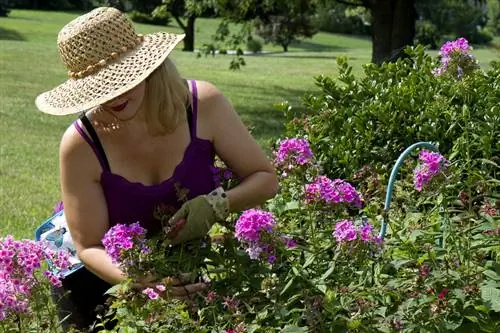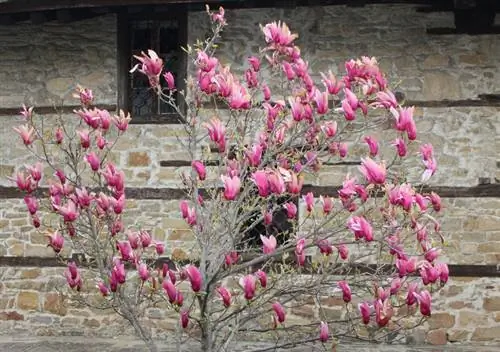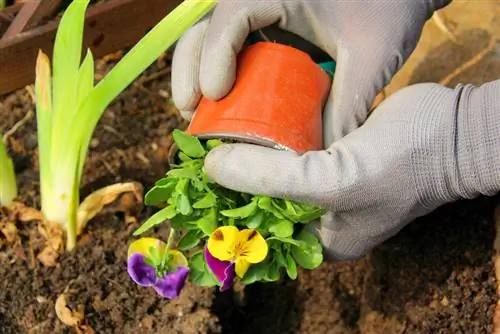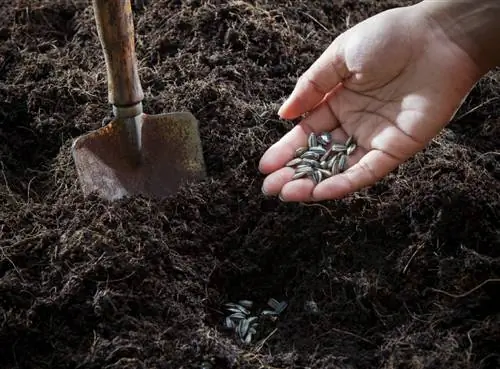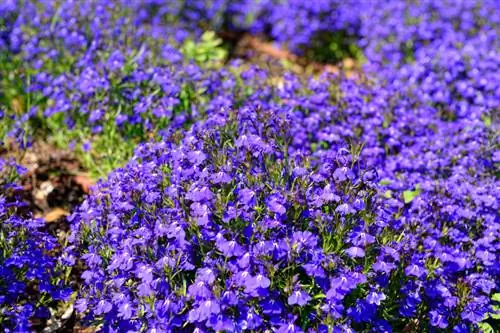- Author admin [email protected].
- Public 2023-12-16 16:46.
- Last modified 2025-01-23 11:20.
Hydrangeas with their romantic flower balls are a wonderful decoration for every garden. If you want to grow offspring from a particularly attractive hydrangea, it's not as difficult as you often think and can be done easily even without a green thumb. We'll tell you how it works.
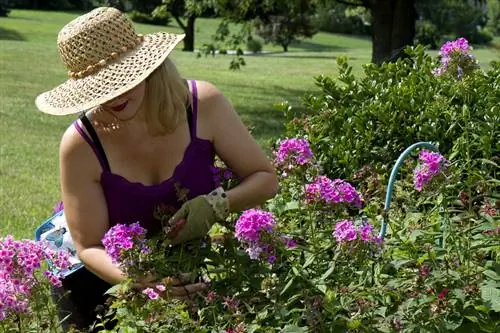
How can I successfully propagate hydrangeas?
Hydrangeas can be propagated by cuttings, sinkers, division or random propagation in a glass of water. For cuttings, shoots approx. 15 cm long are cut in June or July and then planted in potting soil until they form roots.
Propagation by cuttings
If you want to grow hydrangeas yourself in this way, you need to cut cuttings about 15 centimeters long from the hydrangea in June or July. Make sure that the mother plant thrives and produces plenty of flowers, as it will pass these characteristics on to its offspring. Only cut shoots from one-year-old but already mature wood, as these form roots more easily.
Preparation of cuttings:
- Separate shoot tips and flowers.
- Cut the shoot below a pair of leaves at an angle with a sharp knife.
- Remove the pair of leaves directly above the interface.
- Short the shoot to a remaining pair of leaves.
- Cut the leaves in half to reduce the evaporation area.
In this way you can cut a number of shoots from a long branch of the hydrangea and require relatively little plant material to produce several cuttings.
Introducing the saplings
Plastic fruit bowls that have slots or holes in the bottom area to prevent waterlogging are ideal as growing containers. Fill this with coconut soil or potting soil. Coconut soil is preferable because its porous structure means it remains very loose, allowing the delicate roots to penetrate the material easily.
Stick the cuttings about five centimeters deep into the substrate, making sure that the leaves do not touch each other. This is necessary so that the air can circulate well, because hydrangea cuttings quickly begin to mold in high humidity. Press the soil lightly so that the shoots have a good grip and water the shoots.
Creating the right climate
Now make a small greenhouse by putting a transparent plastic bag over the growing container. It is important to provide fresh air regularly over the next few weeks and to ventilate the foil house at least once or twice a day.
It is also important to always place the cuttings out of the sun. The delicate plants burn as soon as they are exposed to direct sunlight for a long time.
The shoots of the hydrangea need a lot of nutrients to thrive. You can tell if there is a nutrient deficiency if the leaves only turn light green. However, fertilize very sparingly, because too much fertilizer is just as harmful as too little. The easiest way to use is special liquid hydrangea fertilizer, which you add to the irrigation water in half the prescribed dosage.
Separating the cuttings
As soon as the plants have formed small root balls, you can move them into flower pots. Continue to care for the hydrangeas indoors for the first year. In the second year, slowly accustom the offspring to the changed conditions in the garden before placing the hydrangea in the flower bed.
Propagation by reducers
If you want to grow a hydrangea yourself, this is the easiest method. All you need is:
- enough space in the flowerbed
- a stone
- a planting shovel
Choose a long shoot in the lower part of the mother plant and gently press it to the ground. Dig a small hole where it touches the ground. Lower the branch into the depression and cover the middle with soil. Complain the point with the stone.
In the next gardening season, you can carefully dig up the sinker with a spade and separate it from the mother plant. We recommend cultivating the young plant in a sufficiently large pot for a year so that dense and strong roots form. The following spring you can put the hydrangea in the bed, where it will grow quickly and, with a bit of luck, produce its first flowers that same year.
Random propagation in a glass of water
Hydrangeas are popular cut flowers that last exceptionally long in the vase. They often already form roots here. Transplant these shoots into a container in which you have filled potting soil. A small hydrangea will grow from the former vase decoration, which in most cases will bloom the next year.
Reproduction by division
You can carefully divide hydrangeas that are particularly wide and not too tall. Use a spade to cut off part of the bush at the edge of the mother plant and transplant it to the desired location. Mulch the hydrangea well and water the plant regularly so that the plant roots quickly.
Tip
Hydrangeas take some time to develop roots, so please don't lose patience when growing them. In our experience, it can take up to eight weeks for the shoots to form a small root ball.

